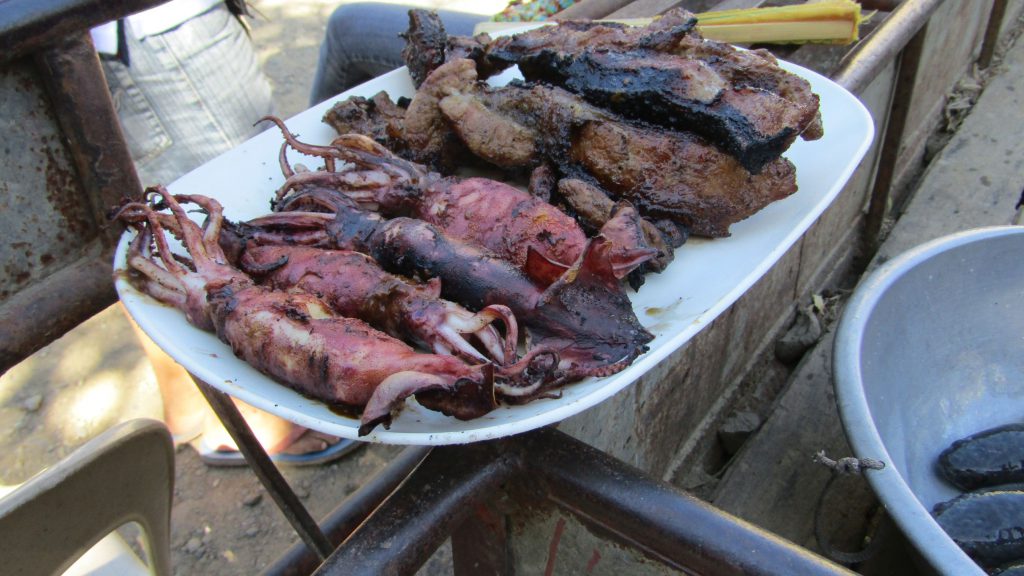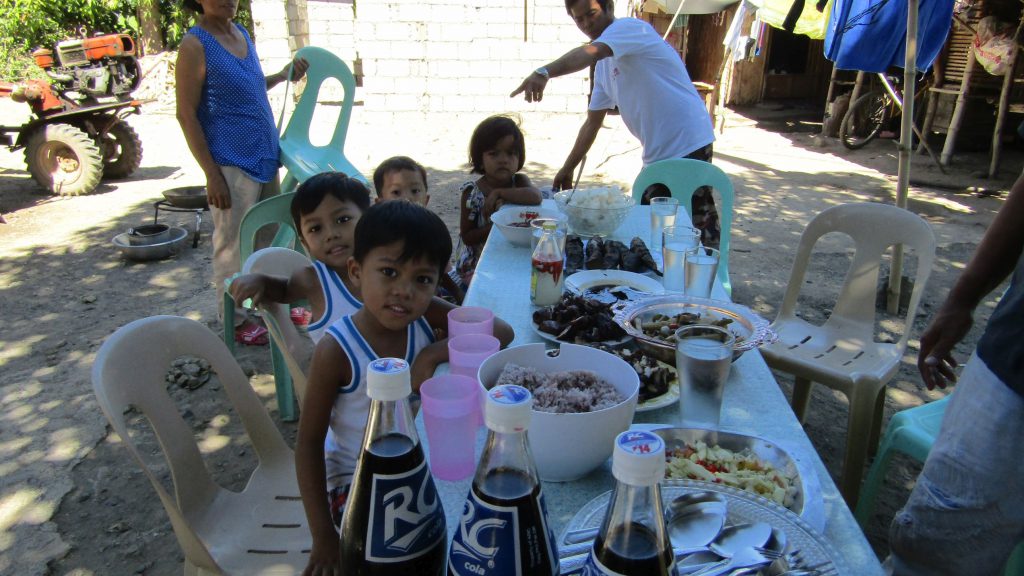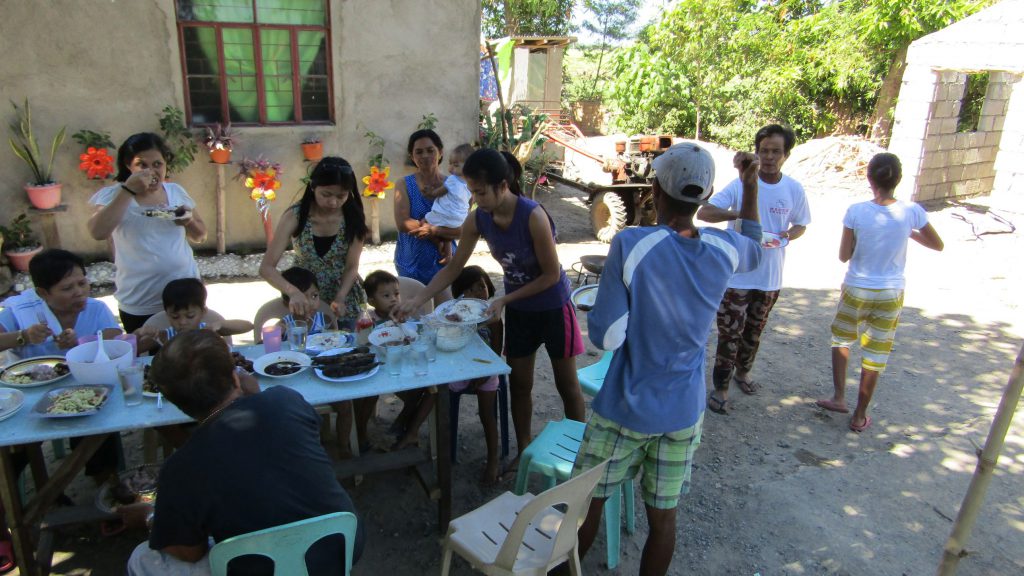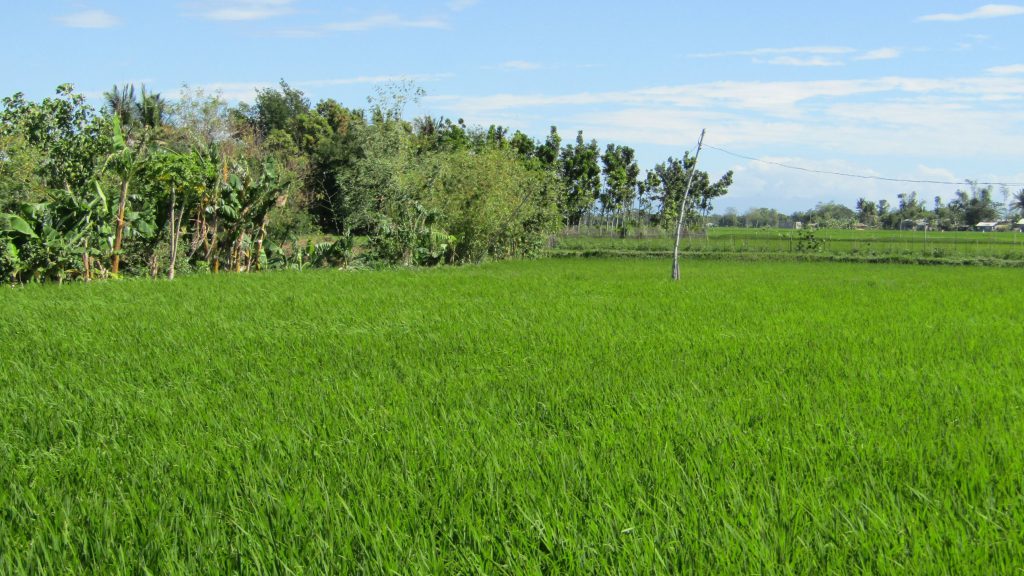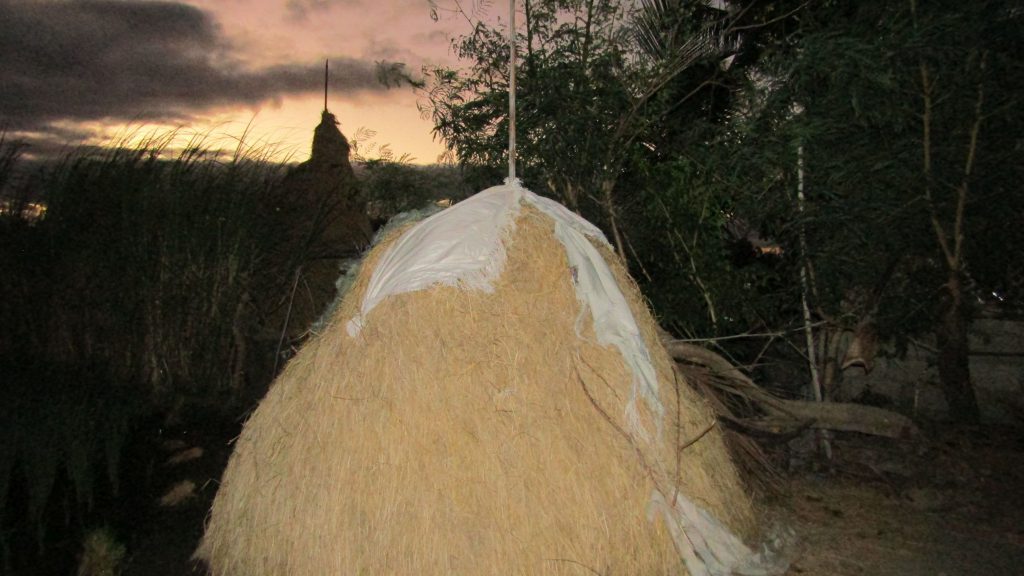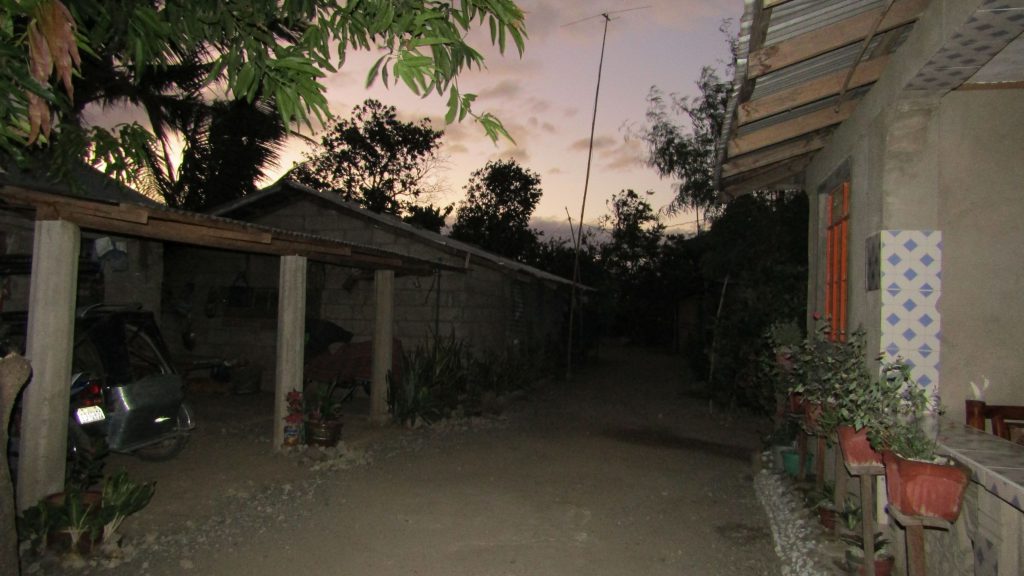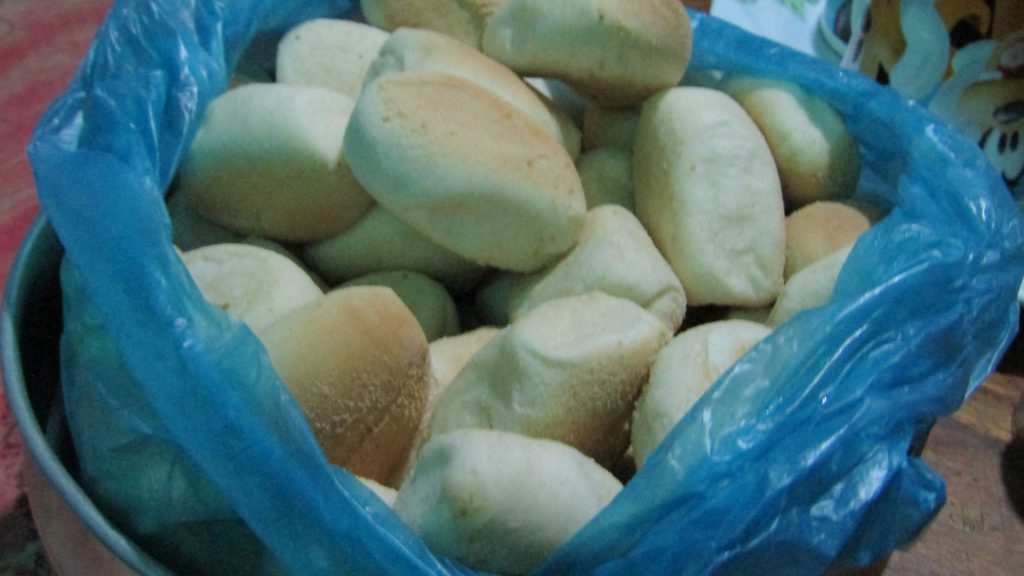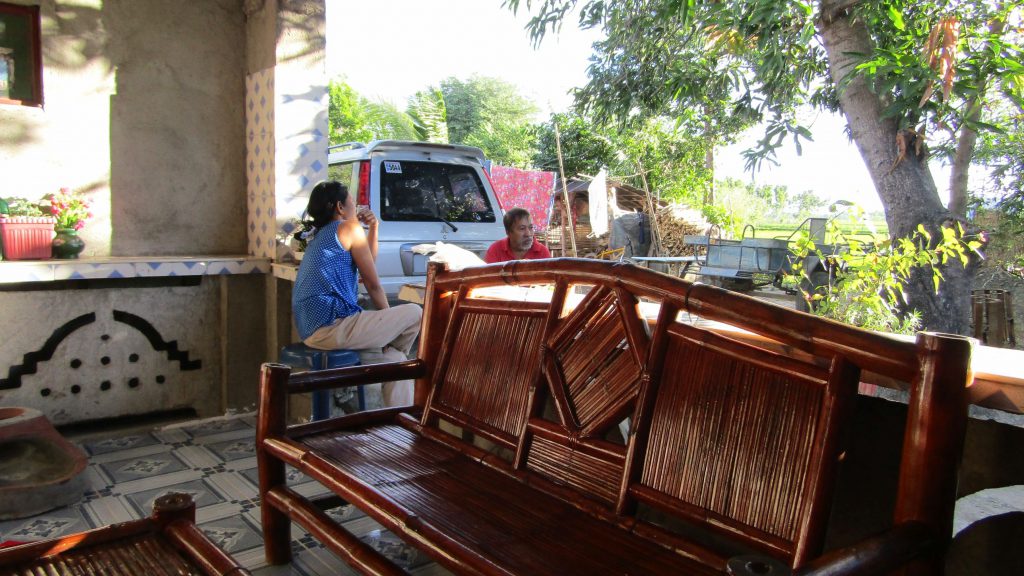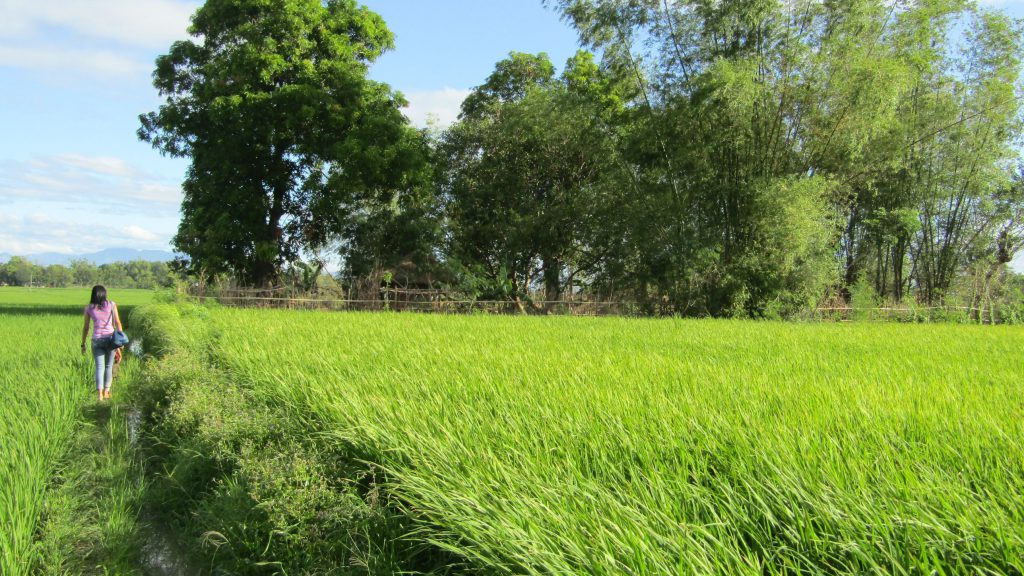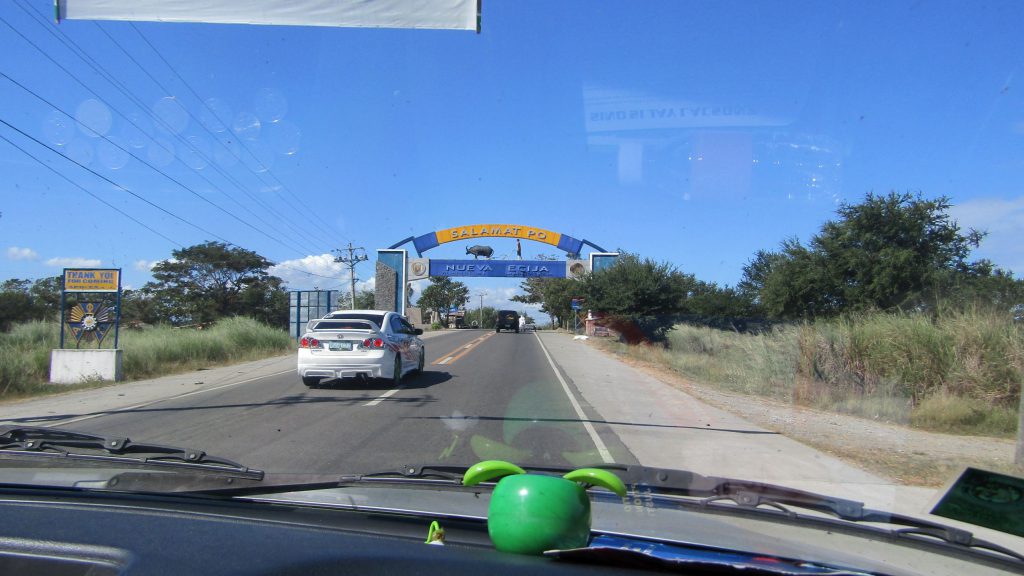Day 1 – Jan. 31, 2016 – (Sunday): Nueva Ecija, here we come
Rey, who would be driving, arrived at my aunt’s house at about 3:45 AM that balmy Sunday morning. January is usually the height of the dry season in the archipelago. Still, the calm westerly winds also gave that early part of the day a relaxed and almost comforting atmosphere.
I hardly slept that night, still suffering from the late effects of jet lag and the non-stop noise from the tricycles and scooters. My aunt’s house straddled the main road in that part of Imus (a city in the province of Cavite) that had become a veritable commercial area — a far cry from the rural appeal the place had for me, where I finished my high school years in the mid-70s.
We wasted no time and left for Mandaluyong, where we picked up Rona (my sister-in-law), her mother, Nita (my mother-in-law), and Ronald‘s family (his wife, Winnie, and their twin sons, Dominic and Benedict), as we were running late. But not after stopping by a drug store where Rey bought some medicine for his stomach ulcer and at a gas station where we inflated the tires to their correct pressure. After all, the trip to Nueva Ecija would be about 5-6 hours, despite our very early start.
Ronald married a coworker while he was a teacher in a private school near San Juan, Metro Manila. Winnie‘s parents hail from Santo Domingo, Nueva Ecija, where both had been tilling a sizeable piece of farmland entrusted to them.
Like most farm workers in the Philippines, they don’t own the title to the land but only get a portion of the rice harvest. Nueva Ecija owns the title of being the “rice granary of the Philippines.“
It was almost 6 AM when we left Manila and its outskirt cities as we entered the first of three (3) expressways to our destination.
We used a connecting road along Mindanao Avenue in Quezon City to enter NLEX (North Luzon Expressway). This two-lane expressway (equivalent to a secondary highway in advanced countries) would extend all the way to Santa Ines in Pampanga, and then utilize another connector road in Tarlac to another expressway called SCTEX (Subic-Clark-Tarlac Expressway).
We traversed only a short portion of this newly built two-lane highway until it dead-ends in the city of Tarlac, as we veered east to the final expressway, TPLEX (Tarlac-Pangasinan-La Union Expressway).
The road narrowed after we used the Aliaga exit along the TPLEX and found ourselves on the old MacArthur Highway, which was once the main artery for travel north of these islands.
You’re already in Nueva Ecija when you see ‘palay‘ (unmilled rice) on the roadside and passenger tricycles plying the main roads.
We finally arrived in the town of Santo Domingo five (5) hours after we left Mandaluyong. The trip covered approximately 250 kilometers (155 miles), yet it felt like one of the longest days I’ve had on the road, due to the numerous turnouts we took after leaving the expressways.
Winnie’s parent (Willie and Gloria) house is a low-slung, single-story concrete structure located about a few hundred meters from the feeder road, surrounded by rice fields.
I was immediately attracted to a set of varnished bamboo chairs, two of which are longer than the others, on the small veranda of the house that overlooked the rice fields. What perfect spots to take a quick nap!
After the formal introductions, I used my bag as a pillow and stretched my tired body on one of the long chairs that faced the rice fields. At the same time, Ronald and his wife went to the nearest public market using the family-owned tricycle to buy all the ingredients for lunch.
Lunch was almost ready when I woke up an hour later. Winnie had been busy grilling the large yet fresh ‘pusit‘ (squid), several pieces of fish locally called ‘dalag‘ (mudfish), and ‘pork liempo‘ (grilled pork spareribs marinated in ‘calamansi‘ (calamondin) and soy sauce).
Using freshly harvested vegetables from a nearby plot, Winnie’s mother prepared an Ilocano version of “pinakbet “(vegetable salad with shrimp paste). She also made a side dish of green mango salad. On a long table set up outside, heaps of newly cooked rice lie in wait.
After lunch, I couldn’t resist taking a few pictures of the rustic scenery and then headed back to my makeshift bed and took another nap. The magnificent view of the verdant rice fields seems to have cast a hypnotic spell upon me that, in no time, I was in dreamland once again.
At about 3 PM, Rey reminded me that we should leave for Talavera before dark, as we might not find it easy to look for my relatives’ place.
I had planned to visit my uncle, “Tata Amado” (the only living brother of my late father), and cousins in the nearby town of Talavera, which was one of the reasons I agreed to join the trip.
We reached Sicsican Bridge in barangay Calipahan, Talavera – the only landmark I could still remember getting there- in about 40 minutes using the interior roads. We used to collect some pebbles along its banks and traipsed in the river’s clear waters when it was not too deep.
We had to ask for directions twice before we found my cousin Fidela’s house. She was our dear ‘Ate Dely‘ when she was still a teenager and stayed with us in Baclaran. She’s the second eldest in the large family of my uncle, comprising eight (8) daughters (Lucena (†), Fidela, Ila, Vita, Teresa (Tate), Josefina (Fina), Divina, Cristeta (Ata), and an only son, Ambrosio (‘Ambo‘).
‘Ambo‘ is about my age and was my constant companion during my visits, usually, accompanying my father. It had been almost 40 years since my last visit to Talavera. The last time was during the summer break before I entered my first year of college; I had brought my bike along on that trip, and I remember riding it as far as the province’s boundary with Nueva Vizcaya.
While Ate Dely and I got reacquainted, Rey wandered around the surrounding areas.
Winnie and Ronald took this as an opportune time to make a quick trip to nearby Cabanatuan City aboard a tricycle. I moved on to visit the rest of my cousins, whose houses were just next to each other — just a few meters away from Fidela’s.
Although most of the siblings built their houses on the ancestral lot, a portion of their old home, where they grew up, remained.
Upon seeing my Tata Amado in his wheelchair on the veranda of their old house, my mind raced back to when I was in my late teens, and everywhere I looked, it was fresh and expansive.
I still remember the infinite rice fields, the carabaos (water buffalos) in the shed, the giant ‘suha‘ (pomelo), and other fruit trees. And, yes, the quiet, dusty road that led inwards to the town — and the same dusty roads where Ambo and I rode our bikes on our way to Pantabangan Dam, which was in its final phase of construction during that period.
The roads are now busy, and the incessant sound of the tricycles seems to drown whatever peace has remained. Everything seems to have been taken over by a melange of concrete, steel, sheet metal, and other appurtenances that humans euphemistically term progress.
And I felt a deep sadness in my heart and that same question beckoned — “Why do we have to grow old?”
I took pictures, asked questions, and met some of my nephews and nieces whose names and faces I probably won’t remember the next time. They would have all grown up and changed, and will have their own families.
We headed back to Santo Domingo before sunset and stopped briefly at a 7-11 convenience store for three (3) bottles of ‘San Miguel Grande‘ (the ‘national beer’ in a huge bottle). We made another stop at a roadside “ihaw-ihaw“ (barbeque) stall, where we got some grilled “pork liempo“ (pork ribs) and “lechon manok” (grilled chicken).
Our companions were already in their sleeping attire when we arrived. We had our beers and BBQ for dinner, along with a plateful of rice and a vegetable dish.
Winnie’s father and brother later joined us at the table as we spent the rest of the evening listening to stories that primarily focused on how their family had settled on the place.
Day 2 – Feb. 01, 2016 – (Monday): The Road Back to Manila
A mosquito net and an electric fan enabled me to get some deep sleep, so I grabbed my camera and took nature’s call outside to take a few pictures of the surrounding areas at daybreak. It was about 6 AM.
The narrow dirt road that led to a cemented one, which would take us to the main highway, was still empty, and the sunrise painted the horizon with varying shades of black and yellow.
I staggered back inside the house to make myself a cup of coffee. Everyone roused up early except one of the twin, still deep in slumber on the sofa bed.
Someone had prepared the kitchen table for a quick breakfast — a Thermos bottle, packets of instant coffee and chocolate, and a blue plastic bag full of bite-sized hot “pan de sal” (lightly-salted bread rolls) were already neatly laid out.
I grabbed a few pieces of the tiny buns as Ronald emerged from the door near a hand-driven water pump, held up two cans, and asked if I wanted corned beef hash or sardines for him to sauté.
“Both,” I replied, and immediately headed to the veranda to enjoy the morning view of the rice fields with my impromptu breakfast.
After everybody had their breakfast, we took turns fetching water from the manual water pump using plastic pails for our showers. I used the smaller outdoor toilet near some bamboo trees, and tidbits of memories flooded my brain about how I would go through all these morning rituals during my extended stays with my cousins in Talavera.
It was about 9 AM when we all got ready for the trip back to Manila, but not after passing by the small parcel of land centrally located among all the rice fields in the surrounding areas that Ronald had called “gubat” (forest).
We had to walk along very narrow footpaths to reach it, so we parked the van along the road, near a treehouse. Her wheeled walker prevented my mother-in-law from coming along. Rona decided to stay with her in the truck. She would join us in the ‘gubat’ a few minutes later.
The ‘gubat‘ serves as a perfect resting area and refuge for farmers after tilling the land for hours during the hot, dry months and during the typhoon season when sporadic rains and howling winds batter the rice fields.
‘Manong’ Willie (in the Philippines, particularly in Luzon Province, affixing the word ‘manong’ to a name is a sign of respect) had erected a small hut with elevated flooring made of bamboo and nipa. Bamboo and palm – came from the trees that grew abundantly on the fringes of the same tract of land. The underside of the hut served as a temporary coop for native chickens and their young broods until he decided where to build a permanent and larger one on the land.
Except for electricity and a permanent water source, the ‘gubat‘ could be an excellent place to be in case of a calamity, as it’s not only elevated but also self-sufficient. Fruit trees were abundant, and Manong Willie planted vegetables almost everywhere. Several pigs and ducks roamed freely in the open spaces.
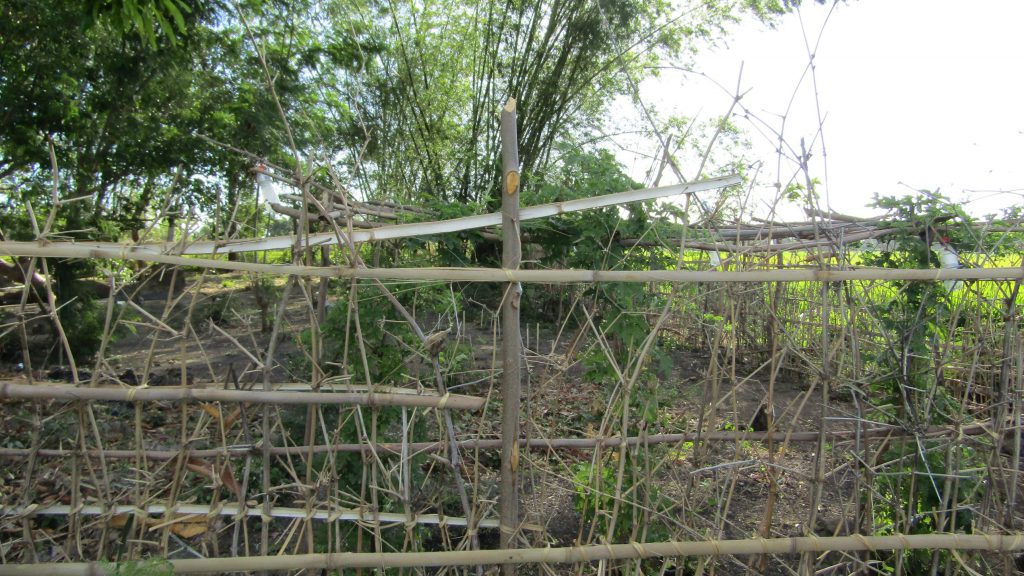
We lingered for over an hour, and my mind tried vainly to connect the present with my long-gone youth. Time, indeed, has ways to temper even the most outrageous of dreams.
And so, during this brief summer interlude in Nueva Ecija, I realized that although my idealism may have long been gone, my appreciation for life and all its blessings will always remain.



